Review: The New Golden Age #1 (One-Shot)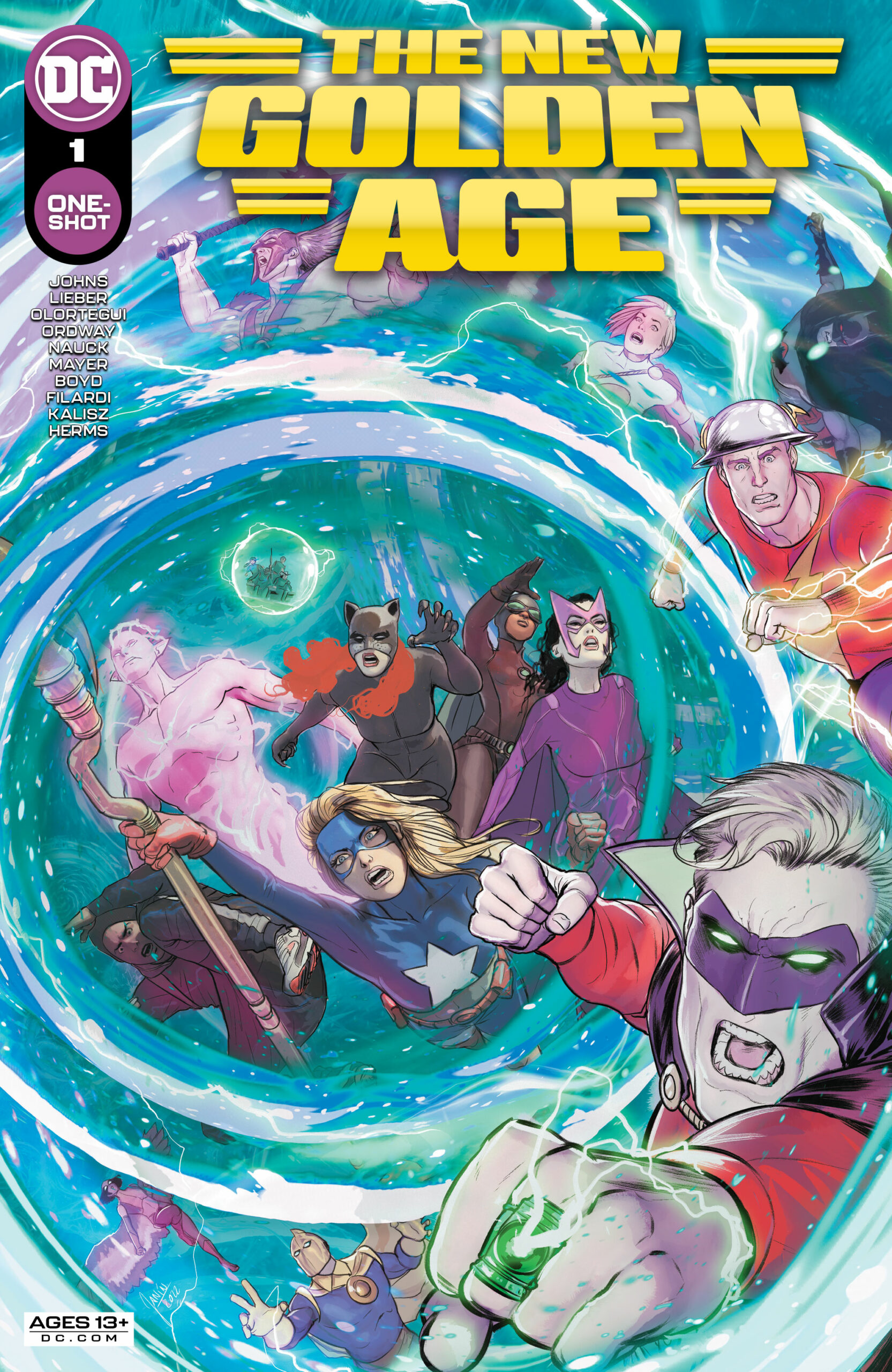 [Editor’s Note: This review DEFINITELY contains spoilers]
[Editor’s Note: This review DEFINITELY contains spoilers]
Writer: Geoff Johns
Art: Diego Olortegui with J.P. Mayer & Scott Hanna, Jerry Ordway, Steve Lieber, Todd Nauck, Scott Kolins, Viktor Bogdanovic, Brandon Peterson and Gary Frank
Colors: Nick Filardi, John Kalisz, Matt Herms, Jordan Boyd and Brad Anderson
Letters: Rob Leigh
Reviewed by: Matthew B. Lloyd
Summary
Someone is targeting the Justice Society of America throughout time in all its incarnations. A mysterious narrator guides us on the journey resulting in a satisfying reveal as the future daughter of Batman and Catwoman stands revealed as the once and future Huntress.
Positives
This could be a long section! Whenever DC Comics decides to do a book that features the Justice Society or those characters traditionally associated with Earth-Two, there has to be a balance between nostalgia and modern relevance. Geoff Johns, no stranger to the Justice Society or Golden Age legacy characters channels a monumental amount of nostalgia that in most cases would be enough to carry an issue. Additionally, he sets up a mystery on multiple levels. The main villain doesn’t seem that hard to guess for longtime fans of Earth-Two stories, but the narrative is peppered with numerous additional questions that must be answered. Those mysteries are more interesting than the villain, but stopping the villain is not only imperative to the survival of the Justice Society, but it is essential to answering some of the questions set before the reader in The New Golden Age #1.
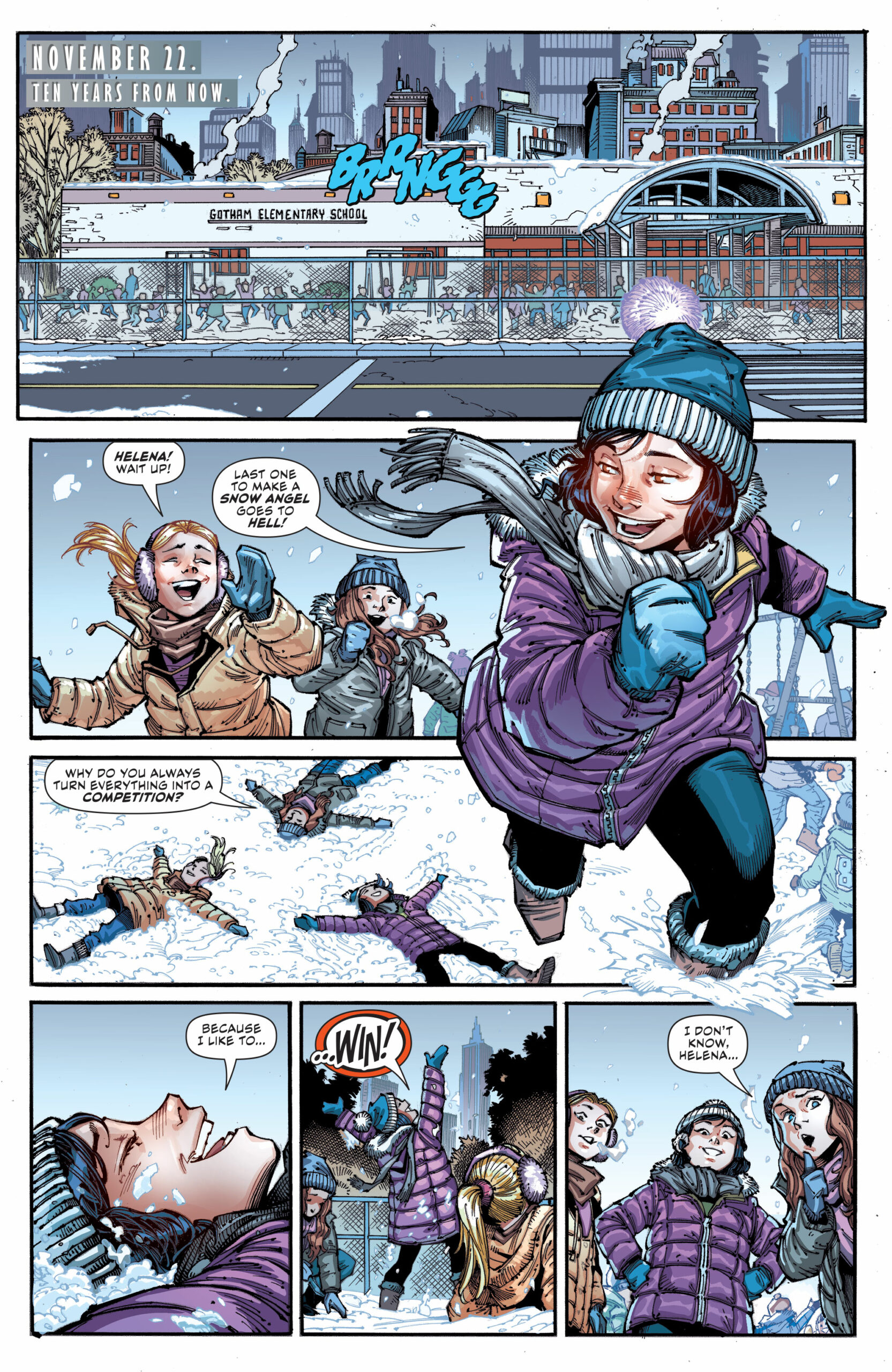
The nostalgia component comes from incidents. Johns pulls moments from the history of the JSA that will be recognizable to fans. Each different segment is drawn by a different artist as well, ensuring that the reader isn’t confused about what time each segment takes place in. Jerry Ordway handles the 1940 segment. Johns incorporates the moments leading up the “photograph” of the JSA that is the cover image on the team’s first appearance in All-Star Comics #3. Johns weaves the narrative and plants clues to the larger mystery in these scenes with the JSA.
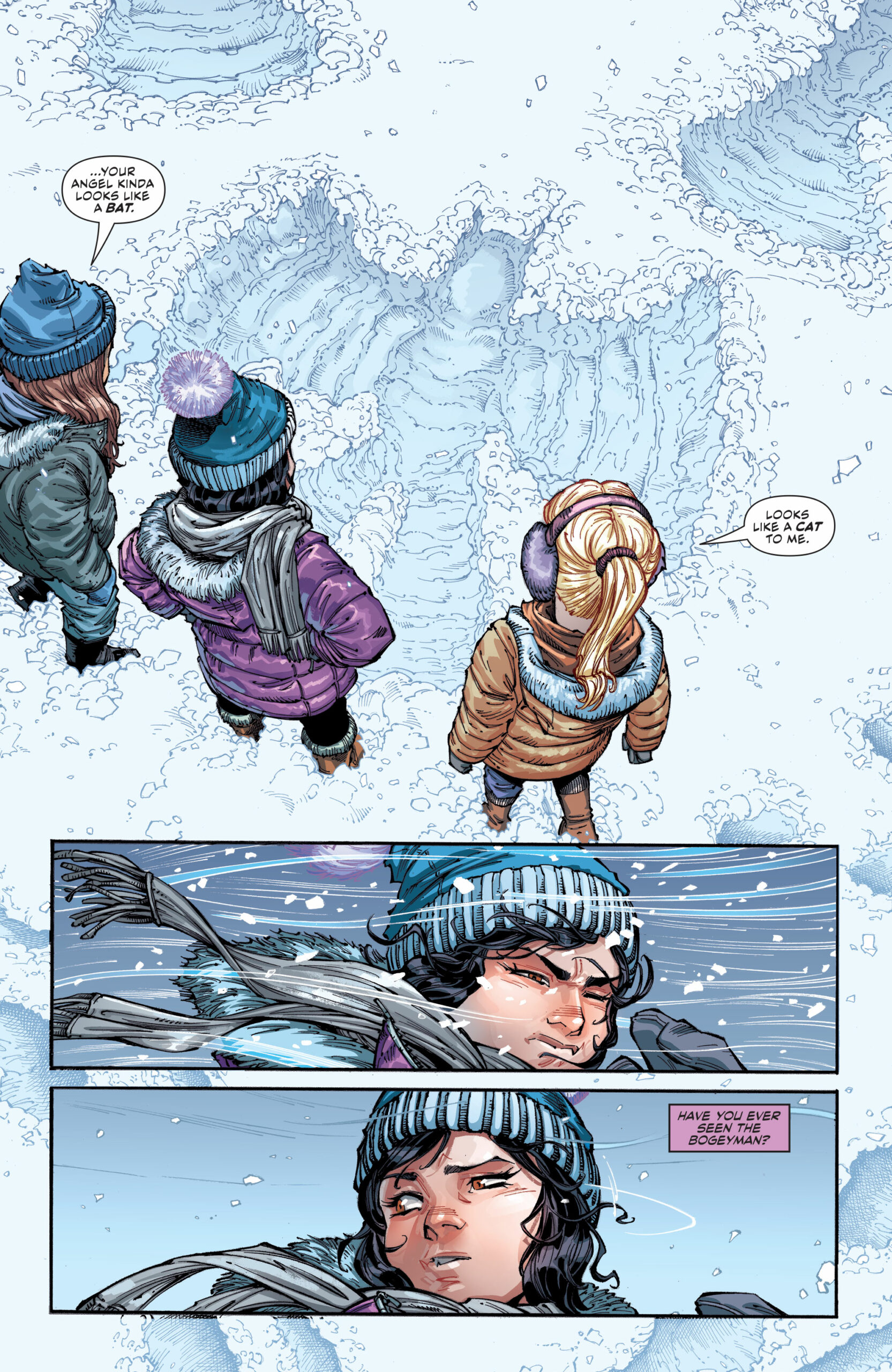
Perhaps, the most surprising scene from the past is taken from the 1970’s incarnation of the JSA. Johns not only drops more clues that flesh out the mystery and how it’s affected the JSA through the ages but sets it in 1976 when the stories were originally published. We get to see Power Girl in her youth as she interacts with Dr. Mid-Nite and Dr. Fate. I’ve read those comics numerous times over the years, and it’s a truly lovely thing to see referenced so significantly in a modern comic. but it also presents some questions about how time is working.
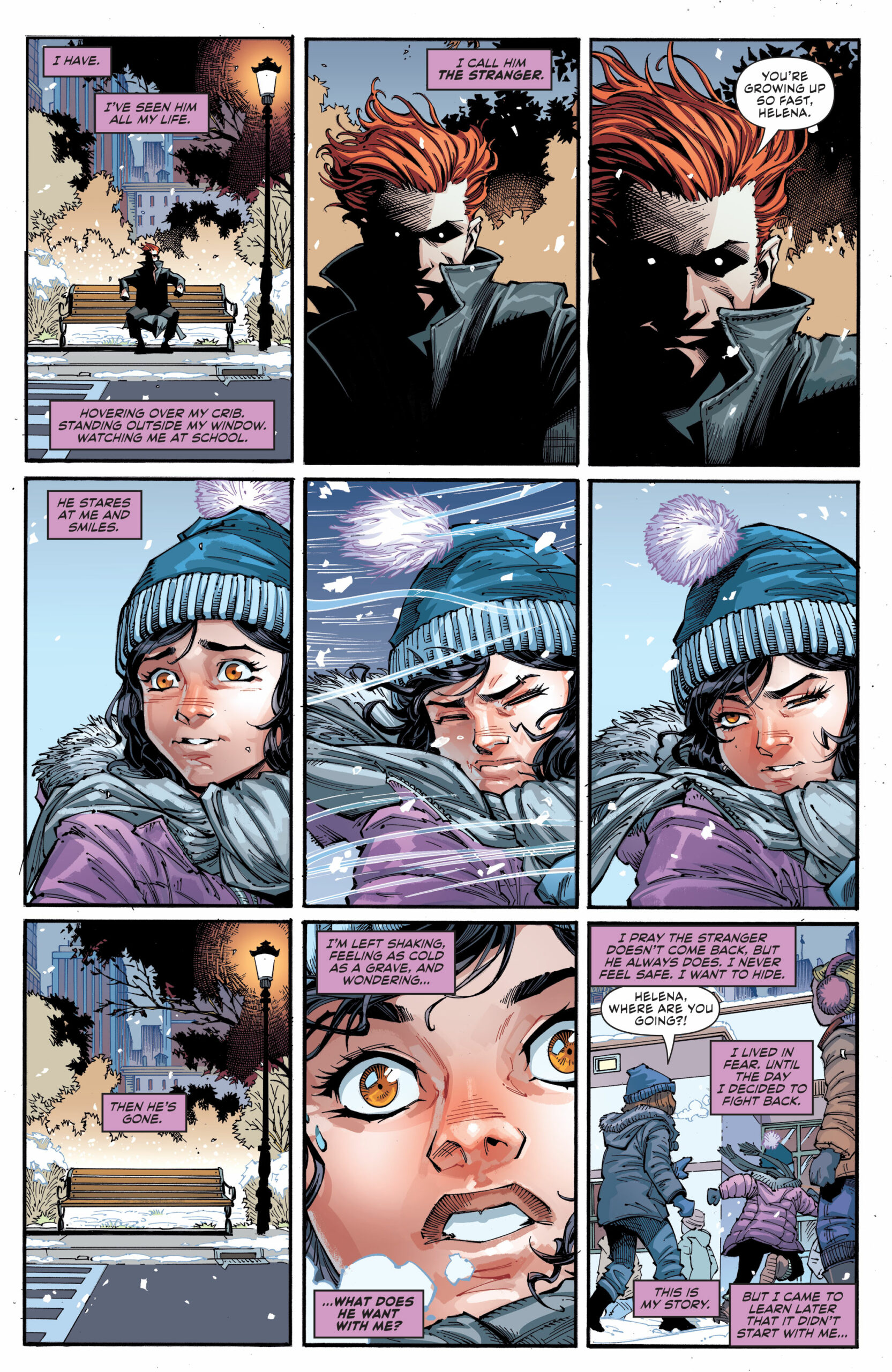
Positives Cont’d
With the events of the original Crisis on Infinite Earths, the original Earth-Two was erased from existence. With the current state of the DCU and the Omniverse etc…one can reasonably assume that it is out there somewhere. However, we aren’t getting a comic about that. The New Golden Age #1 appears to take place on the main DC Earth- whatever that is called now. In keeping with the nostalgia that permeates the issue, Johns appears to be righting a wrong that was a result of the Crisis. The narrator turns out to be Helena Wayne, the Huntress. However, it’s not the original Earth-Two Huntress, instead it’s the future daughter of the Batman and Catwoman from the main DC Earth. The Crisis wiped her from history, and now she returns to the JSA in some fashion. Interestingly, she’s at the heart of the mystery, the detective that seems to have the most knowledge of what’s going on, however, many characters have an inkling that something isn’t quite right, especially Dr. Fate, Kent Nelson. The inclusion of the Huntress in conjunction with the appearance of Power Girl in the issue leads to questions about their pre-Crisis friendship and their iterations that were featured in Earth 2 during The New 52.
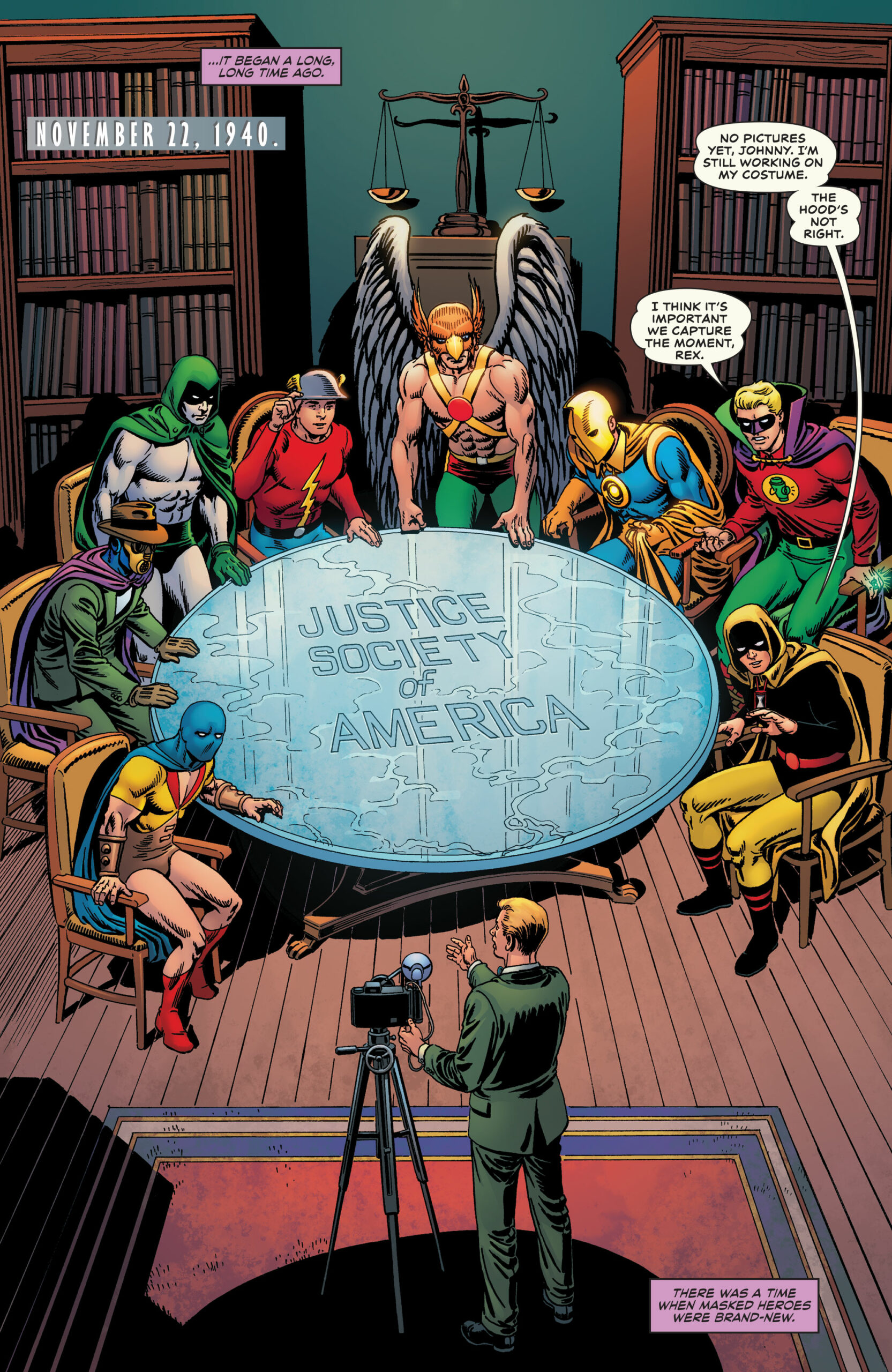
The title of the issue, The New Golden Age is certainly appropriate as Johns introduces a number of new characters that he will explore in Stargirl: The Lost Children and the new ongoing Justice Society of America series. It all began in the Stargirl Spring Break Special in 2021. Johns is finally getting to follow up on concepts introduced in that comic.
Essentially, Johns is presenting a “new” take on the Golden Age. This is the part that should feel fresh and relevant. This ensures that this isn’t a retread of what’s come before. It’s also the aspect that will rely most on the execution. How will old readers react to new Golden Age characters being introduced. We’ve seen this before. Roy Thomas in his heyday at DC Comics did the same thing in All-Star Squadron. We met new Golden Ager Firebrand, Danette Reilly and Amazing Man, Will Everett. Post-Crisis, he introduced new characters to fulfil the roles of the characters that were erased from history, the Golden Age Superman, Batman, Wonder Woman, Green Arrow and Aquaman. This is Johns doing the same sort of thing. However, it’s hard under value Thomas’s attention to detail with the actual stories published by DC in the Golden Age. One would be hard pressed to find an example of Thomas disavowing any of those tales.
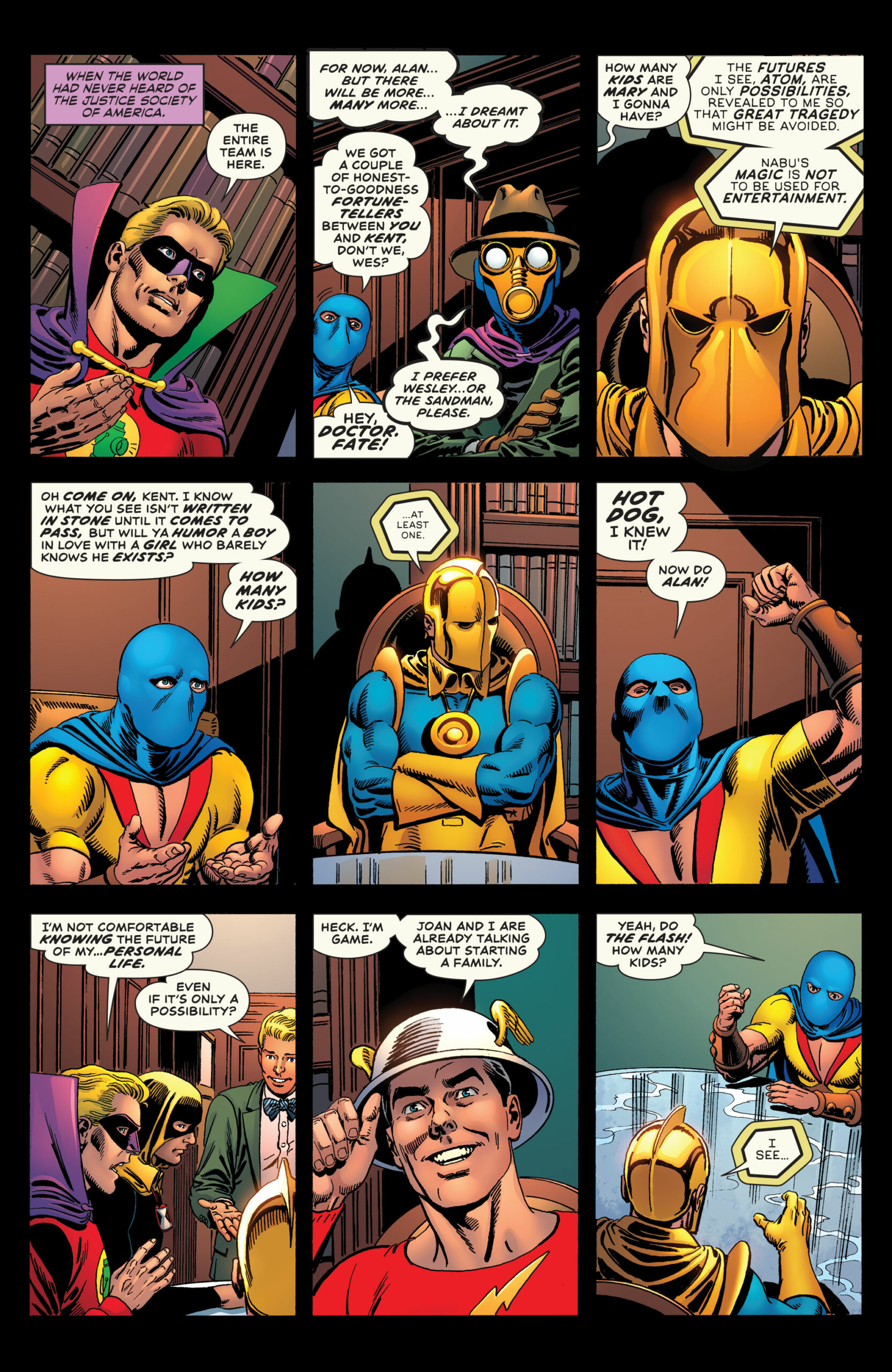
Positives Cont’d
Johns seems to be doing something similar, but also vastly different. At the end of The New Golden Age #1, there are Who’s Who style pages for 13 new Golden Age characters. It may be hard for longtime readers accepting the childless Jay and Joan Garrick as parents of a time lost daughter, but the Who’s Who page and her appearance on the last page of the story go a long way in breaking the ice for even the most stone-faced fan. Additionally, Johns (one assumes Johns wrote all the entries) gives these characters very Golden Age style origins. One of the most exciting characters to appear here is the Golden Age Aquaman. Last seen in continuity (I think) in All-Star Squadron #60 (August 1986), Johns incorporates his original origin from his first appearance in More Fun Comics #73 as well as including his brief All-Star Squadron membership as part of his backstory.
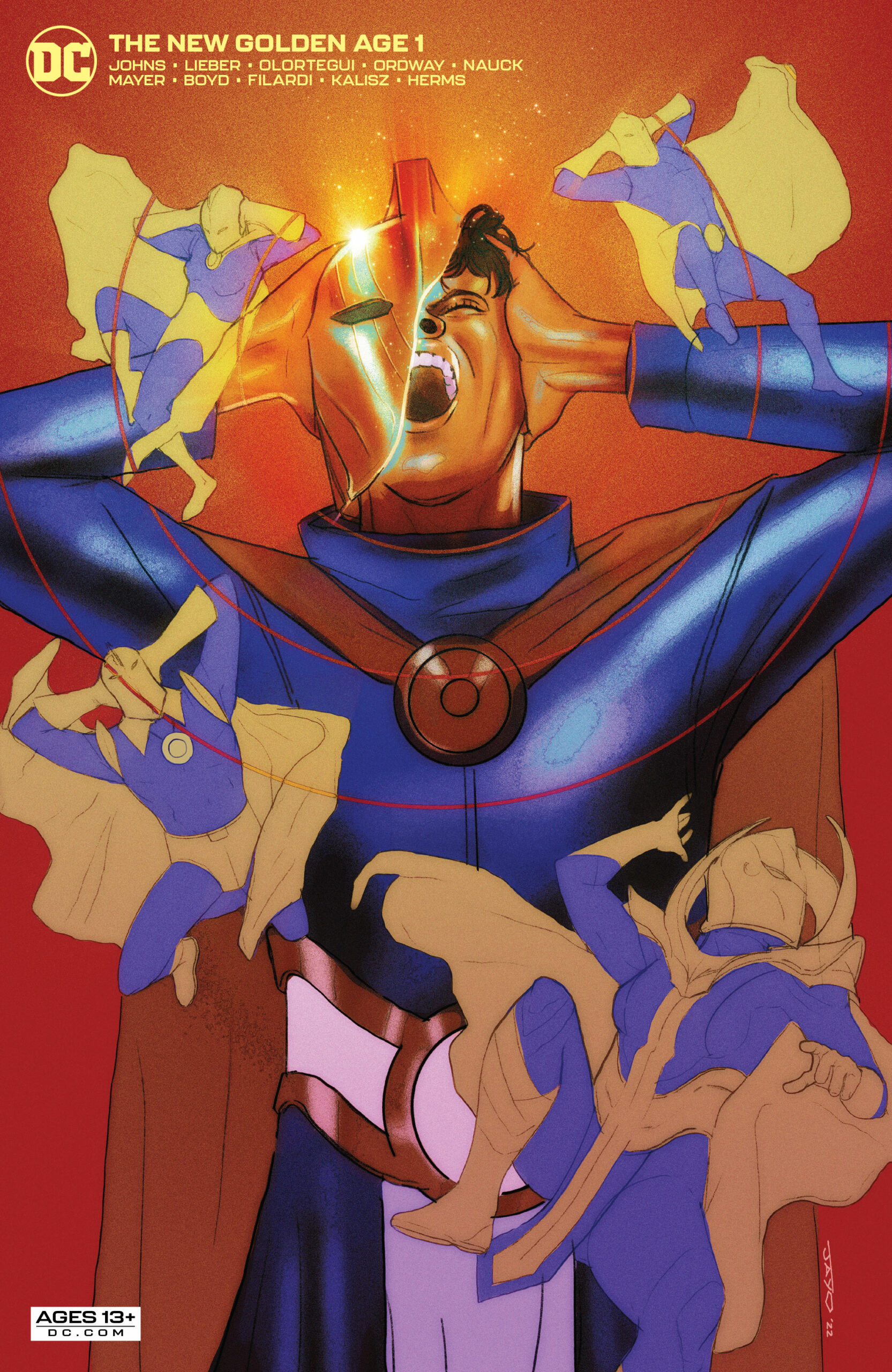
Finally, the different artists all turn in a solid job with Jerry Ordway brining his own nostalgic aspect to the proceedings having been the most important artist on Earth-Two and JSA characters during the ’80’s on All-Star Squadron and Infinity, Inc. Diego Olortegui captures the different moments in Helena’s life with a focus on her emotions. His work here helps Helena feel significant as the character through whom the reader experiences the story.
Negatives
The New Golden Age, like any book that attempts to retcon will fall under heavy scrutiny from longtime fans. It’s hard to change history and characters that have been around for 80 plus years. There are questions about Molly Mayne (Scott?) that need to be answered satisfactorily. There are also some new sidekicks that will need solid reasons explored for being where they are. Some of that modern relevance does seem out of place.
It’s not clear if the recent (in comic book terms) retcon of Alan Scott’s sexuality will play a large role, or any role at all. Alan makes a comment to Doiby Dickles about something that could be construed as an oblique reference to it, but there are so many mysteries in the issue that it could also be a reference to that. No matter, incorporating the retcon of Alan’s sexual orientation will always feel forced and incongruent based on the history of the character and that DC is just “checking a box.”

Additionally, one wonders how the racial and ethnic diversity of the “missing” characters will be handled. Roy Thomas introduced Amazing Man, Will Everett in the pages of All-Star Squadron #23 (July 1983.) Everett was based on a real Golden Age character Amazing Man created by Bill Everett (creator of Sub-Mariner) for Centaur Publications. However, Thomas made DC’s Amazing Man an African American, and laudably, Thomas didn’t shy away from the issue of race in the comic. Everett even faced distrust from members of the All-Star Squadron. The writer even made Everett consider fighting against the heroes because of his feeling as an outsider, being an African American in the America of the 1940’s.
One hopes that Johns will approach these characters of diversity and inclusion with the same depth and not automatically make all the heroes enlightened and modern in their thoughts and beliefs. It’s not a storyline that’s always easy to read. If not treated authentically, it will not feel genuine. It will feel forced like we are rewriting history. Take the time to make the inclusion and diversity be something of substance and not just a box to check.
Verdict
The New Golden Age #1 is a heck of a fun issue! The pages drip with multiple forms of nostalgia while setting up a few mysteries. There is a heavy focus on character, and not just Helena Wayne, but all along the way the issue is peppered with moments that lend some sort of insight. The Who’s Who pages at the end do the same. It’s hard not to be interested in every single one of these “lost” characters on some level. It’s been too long since the Justice Society has had a prominent role in the DC Comics Universe.
It’s hard to judge what this does for readers unfamiliar with the concept save for the solid set up and character bits. For longtime fans, it’s about as good as one could expect without Roy Thomas coming back to pick up where he left off in 1986.
